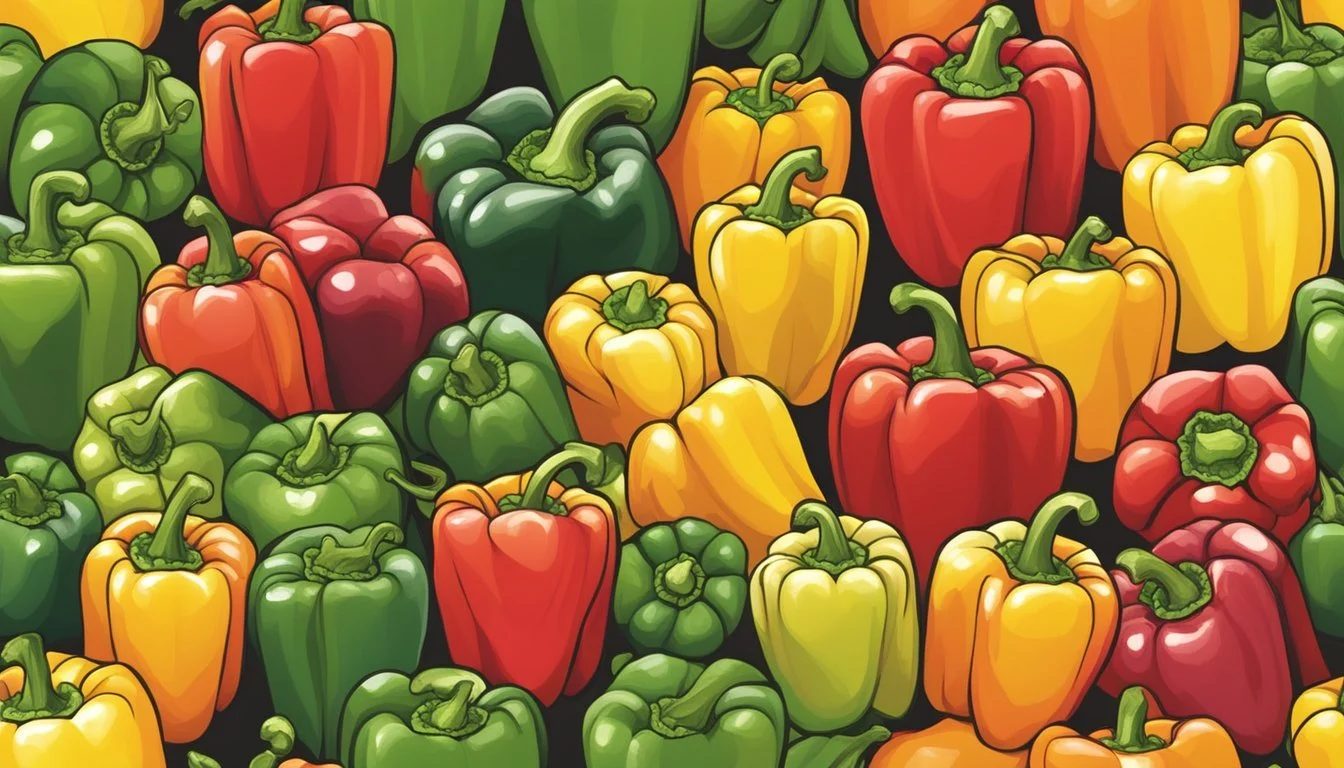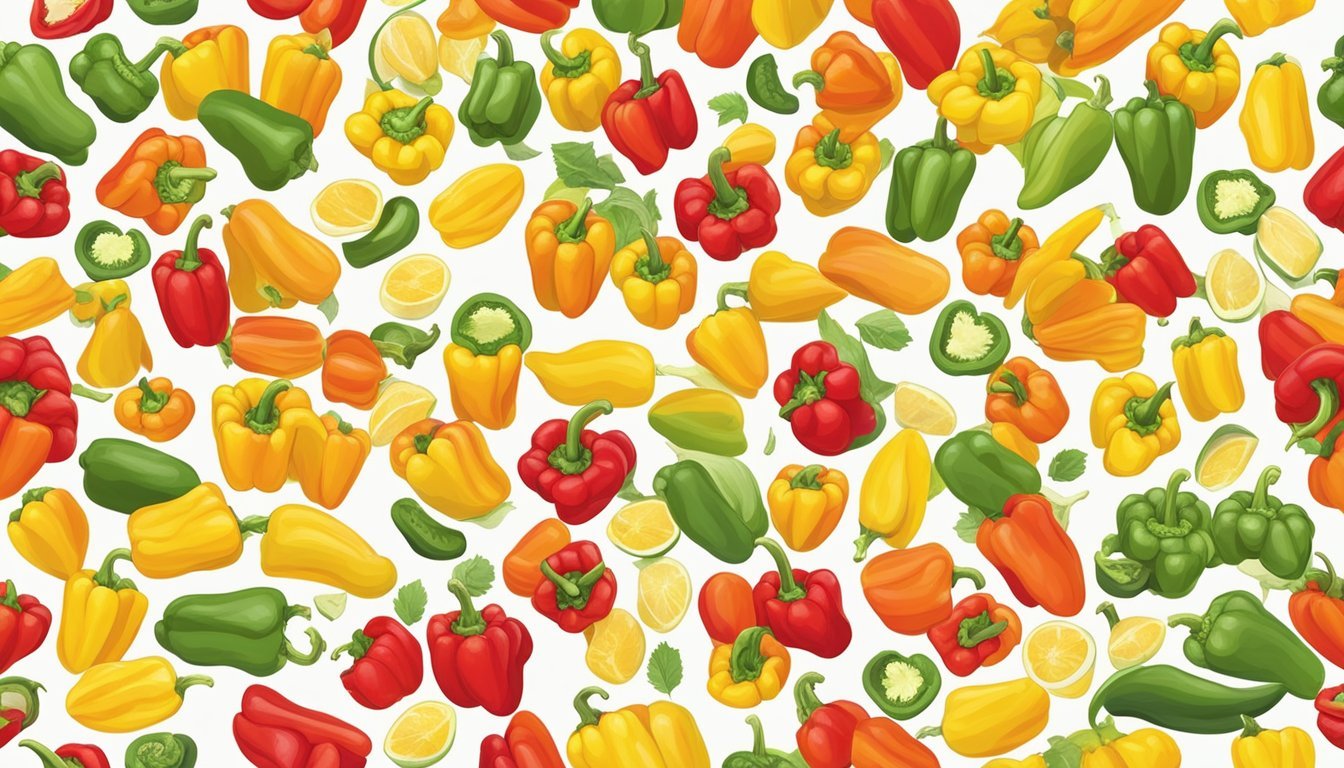Is it Safe to Eat Raw Bell Peppers?
Unveiling the Facts on Fresh Produce Consumption
Bell peppers, a colorful staple in the produce section, are often enjoyed for their crisp texture and sweet yet tangy flavor profile. They are commonly incorporated into a myriad of culinary dishes, from being stuffed and baked to being included in stir-fries and casseroles (What wine goes well with casseroles?). Their mildness compared to other members of the pepper family, such as the jalapeño, makes them a popular choice for consumption in their raw form.
Eating bell peppers raw is not only safe, but it also provides several health benefits. Rich in vitamins, particularly vitamin C, and containing antioxidants, raw bell peppers contribute to immune system support, skin health, and may offer protective benefits for vision. The high water content, alongside the presence of fiber, aids in maintaining a healthy digestive system.
Individuals can seamlessly incorporate raw bell peppers into their diets by enjoying them as a crunchy snack, sliced into fresh salads, or used as edible garnishes. Their convenience and nutritional value make them an excellent choice for those seeking to maintain a balanced and healthful diet.
Nutritional Profile of Raw Bell Peppers
Raw bell peppers are a nutritious and colorful addition to any diet, offering a rich blend of vitamins and minerals, while being low in calories. They also contain a variety of antioxidants and phytochemicals that contribute to overall health.
Vitamins and Minerals in Bell Peppers
Raw bell peppers are an excellent source of vitamin C, providing much more than the daily recommended intake, which is essential for immune function and skin health. They also contain vitamin A, important for vision and immune function, and vitamin K, necessary for bone health. Bell peppers offer a range of minerals as well, including potassium, magnesium, and iron.
Vitamin C: Significantly higher than the daily recommended intake
Vitamin A: Essential for vision
Vitamin K: Necessary for bone health
Potassium: Supports heart function
Magnesium: Involved in over 300 biochemical reactions in the body
Iron: Essential for transporting oxygen in the blood
Fiber Content and Calorie Count
A cup of raw, chopped bell peppers contains over 3 grams of dietary fiber, which is about 12 percent of the recommended daily value. This fiber includes both soluble and insoluble types, which support digestive health and help maintain stable blood sugar levels. Despite their high nutrient content, bell peppers are low in calories, making them a weight-friendly food option.
Dietary Fiber: Over 3 grams per cup
Calories: 31 calories per serving (1 cup chopped, raw)
Antioxidants and Phytochemicals
Bell peppers are rich in antioxidants like carotenoids and flavonoids. These compounds scavenge harmful free radicals from the body, potentially reducing the risk of various diseases. The phytochemicals in bell peppers, such as capsanthin in red peppers, are being studied for their potential health benefits.
Carotenoids: Including beta-carotene and lycopene
Flavonoids: Such as quercetin and luteolin
Phytochemicals: Compounds with antioxidant properties
Health Benefits of Eating Raw Bell Peppers
Raw bell peppers offer a variety of health benefits, from aiding in eye health to bolstering the immune system. They are a powerhouse of nutrition rich in antioxidants which help combat inflammation and may reduce the risk of chronic diseases.
Promoting Eye Health
Bell peppers are an excellent source of vitamin A, which is essential for maintaining healthy vision. They contain lutein and zeaxanthin, two key antioxidants that protect the eyes from damaging light and may prevent cataracts and macular degeneration, common eye disorders.
Enhancing Immune Function
The vitamin C content in raw bell peppers is significantly high, which is crucial for the proper function of the immune system. Eating raw bell peppers provides the body with an immune boost, aiding in the protection against various pathogens and infections.
Reducing Inflammation and Disease Risk
Bell peppers have anti-inflammatory properties due to the presence of antioxidants like vitamin C and beta-carotene. The consumption of these antioxidants may help reduce the risk of chronic diseases such as heart disease and cancer by neutralizing free radicals that cause oxidative stress.
Dietary Considerations and Potential Risks
Raw bell peppers are generally safe and beneficial to include in the diet; however, certain individuals may need to consider potential allergies and digestive concerns. It's important to be aware of these factors to fully understand how bell peppers may affect one's health.
Allergies and Digestive Issues
Some individuals may experience allergic reactions to bell peppers, as they belong to the nightshade family, which also includes tomatoes, potatoes, and eggplant. Symptoms can range from mild to severe and may include itching, hives, or gastrointestinal distress. Pollen-related food allergy syndrome is another condition to be aware of, as it can cause reactions in those allergic to pollen when consuming raw vegetables like bell peppers.
In terms of digestive issues, bell peppers are high in fiber, beneficial for digestive health. However, for some, high-fiber foods might lead to gas or bloating, particularly in individuals with sensitive digestive systems or conditions such as Irritable Bowel Syndrome (IBS).
Optimizing Nutrient Absorption
Bell peppers are rich in vitamin C, which can increase when eaten raw. This essential nutrient aids in iron absorption, which is crucial for preventing anemia. To optimize nutrient absorption:
Combine bell peppers with iron-rich foods like spinach or lean meats.
Include healthy fats, like olive oil, to increase the absorption of fat-soluble vitamins.
Eating raw bell peppers in moderation and with a balanced diet can enhance overall health while mitigating potential risks.
Culinary Uses and Preparation
Raw bell peppers, known for their mild sweetness and freshness, are often used in a variety of dishes to enhance flavor and provide nutritional benefits. They serve as a crunchy element in salads and can be a vibrant addition to stir-fries and casseroles.
Incorporating Raw Bell Peppers into Meals
Salads: One can dice or slice bell peppers in a variety of colors—red, green, yellow, orange—to add to salads, providing a burst of sweetness and a satisfying crunch.
Stir-Fry: Although typically cooked, raw bell peppers can be added at the end of the cooking process in a stir-fry to maintain their texture and bright color.
Hummus & Dips: Bell peppers are perfect for dipping into hummus or other spreads. They can also be cut into strips and served as a healthy snack.
Casserole Topping: Thinly-sliced bell peppers can be sprinkled atop casseroles before baking to introduce a flavorful and colorful component.
Storage and Handling Tips
Refrigeration: Bell peppers should be stored in the fridge to prolong freshness. They typically will remain crisp and fresh for up to 5 days.
Preparation: Before consumption, one should wash bell peppers thoroughly, remove the stalk, and discard the white inner parts and seeds.
Versatility: Beyond raw dishes, bell peppers also adapt well to cooking methods like roasting, which can enhance their natural sweetness. Roasted peppers can be made in advance and stored in the fridge for easy use in meals throughout the week.
Variety and Color Impact
Bell peppers come in an array of colors, each signifying a particular stage of ripeness and nutrient profile. This variety not only affects their health benefits but also influences their taste, providing a suite of options for different culinary preferences.
Nutrient Variations by Pepper Color
Red bell peppers: They are fully ripened, offering higher content of vitamins A and C.
Green bell peppers: These are less ripe and tend to contain fewer nutrients compared to red peppers.
Yellow and orange bell peppers: These colors fall between green and red peppers in terms of ripeness and have a vitamin content that is correspondingly intermediate.
Vitamin A:
Green: Lower amounts
Red: Highest concentrations
Vitamin C:
Green: Good source
Red: Even better source, with twice the vitamin C of green peppers
Taste Profiles: From Sweet to Mild
The ripeness of bell peppers also dictates their taste:
Green bell peppers have a mild, slightly bitter flavor due to their early harvest.
Red bell peppers are sweeter and less bitter because they are allowed to ripen fully.
Yellow and orange bell peppers offer a balance, being less sweet than red but sweeter than green.
The variety in taste makes bell peppers a versatile ingredient suited to both raw and cooked dishes, matching personal preferences and culinary requirements.
Comparison: Raw vs. Cooked Bell Peppers
When comparing raw and cooked bell peppers, one must consider the shifts in nutritional value as well as changes in texture and flavor that cooking can cause.
Nutritional Differences
Vitamin C: Raw bell peppers are rich in vitamin C, with red bell peppers providing up to 317% of the recommended daily value per cup. Cooking can diminish their vitamin C content due to its heat sensitivity.
Carotenoids: Cooking can increase the availability of certain compounds like carotenoids, which are beneficial antioxidants. Cooked red bell peppers can sometimes offer more of these nutrients than their raw counterparts.
Nutrient Raw Bell Pepper Cooked Bell Pepper Vitamin C Higher Lower Carotenoids Lower Higher
Texture and Flavor Changes
Texture: Raw bell peppers have a signature crispness that is softened by the cooking process. They provide a crunchy texture that is often sought after in salads and fresh dishes.
Flavor: The flavor of bell peppers intensifies when cooked. Cooking bell peppers can bring out a sweetness, especially in red, yellow, and orange varieties, that raw bell peppers have in a more subtle form. Green peppers retain some of their slightly bitter, grassy flavor whether raw or cooked.
Raw: Crisp, subtly sweet (red, orange, yellow), slightly bitter (green)
Cooked: Tender, sweeter (especially in red, orange, yellow)
Summary
Raw bell peppers are safe to eat and provide numerous health benefits. They are an excellent source of vitamins A and C, which are essential for immune function, skin health, and vision. Additionally, bell peppers contain fiber, which is beneficial for digestive health.
One can consume these colorful vegetables without the need for cooking, and they offer a mild, sweet flavor that can be a pleasant addition to salads, sandwiches, and as a standalone snack. The absence of capsaicin, the compound that gives hot peppers their heat, makes bell peppers mild enough for most people to eat raw.
The nutritional content of bell peppers varies slightly by color. A medium green bell pepper contains approximately:
5.5 grams of carbohydrates
92% water
Small amounts of protein and fat
In contrast, a red bell pepper has around:
7.2 grams of carbohydrates
A higher amount of vitamin A, due to its ripe state
When selecting bell peppers for raw consumption, one should choose ones that are firm and free of blemishes. They should be stored in the refrigerator and ideally used within five days for optimal freshness.
In summary, raw bell peppers are not only safe to eat but also a nutrient-dense food that can be a delightful part of a healthy diet. However, individuals with specific food intolerances or allergies to peppers should naturally avoid them.








